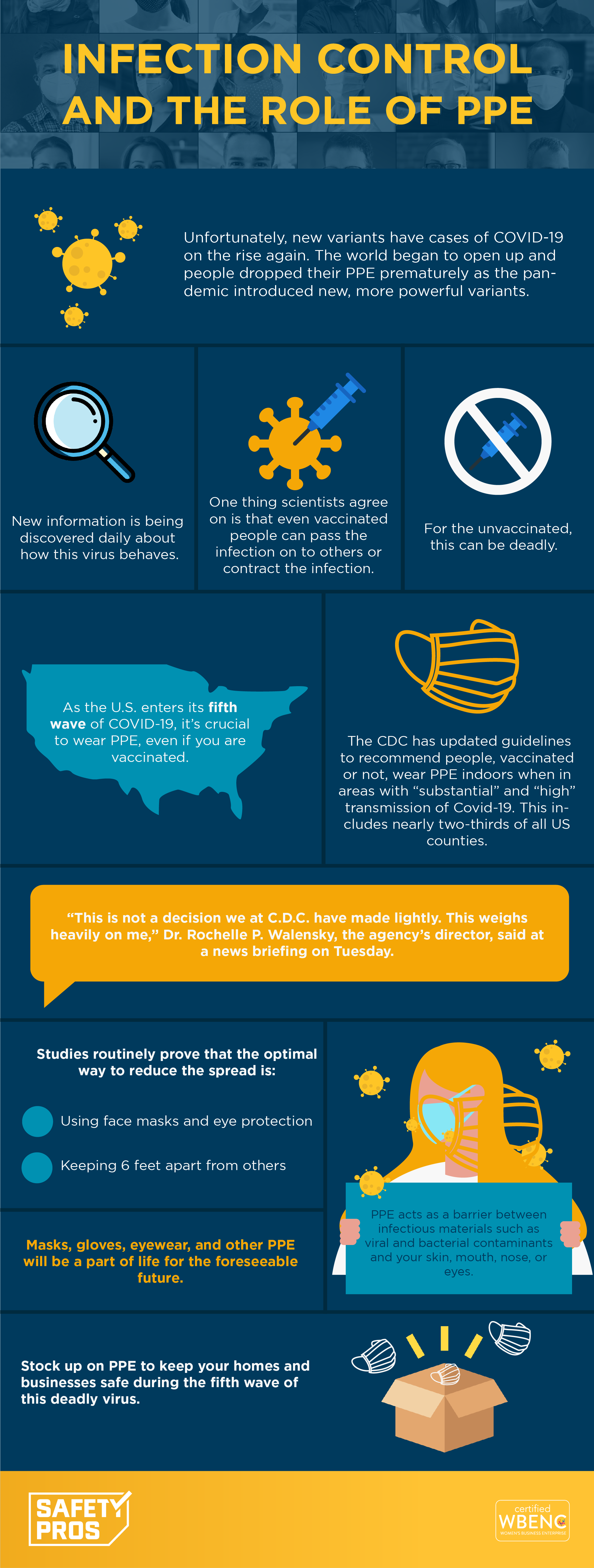Unfortunately, new variants have cases of COVID-19 on the rise again. The world began to open up and people dropped their PPE prematurely as the pandemic introduced new, more powerful variants.
New information is being discovered daily about how this virus behaves. However, one thing scientists agree on is that even vaccinated people can pass the infection on to others or contract the infection without symptoms. For the unvaccinated, this can be deadly.
As the U.S. enters its fifth wave of COVID-19, it’s crucial to wear PPE, even if you are vaccinated. The CDC has updated guidelines to recommend people, vaccinated or not, wear PPE indoors when in areas with “substantial” and “high” transmission of Covid-19. This includes nearly two-thirds of all US counties.
“This is not a decision we at C.D.C. have made lightly. This weighs heavily on me,” Dr. Rochelle P. Walensky, the agency’s director, said at a news briefing on Tuesday.
Studies routinely prove that using face masks and eye protection, as well as keeping 6 feet apart from others is the optimal way to reduce the spread. PPE acts as a barrier between infectious materials such as viral and bacterial contaminants and your skin, mouth, nose, or eyes. Masks, gloves, eyewear, and other PPE will be a part of life for the foreseeable future. Stock up on PPE to keep your homes and businesses safe during the fifth wave of this deadly virus.
